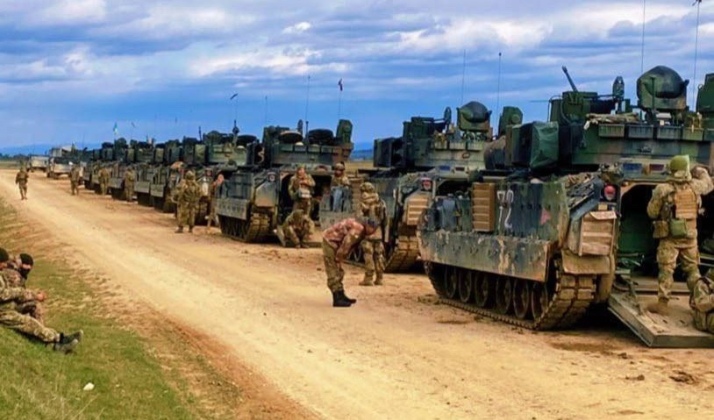News
Ukrainian Artillerymen Report 60-80 Percent Fall in Firing Rates Due to Crippling Munitions Shortages
Ukrainian artillery units have been forced to reduce ammunition expenditure by 80-90 percent to just 10-20 rounds per day. This was from a standard of 50 and peaks of close to 90 before major ammunition shortages began, accordingly personnel cited by the Washington Post, A member of the Ukrainian Army 148th Artillery Brigade, which operates Western-supplied 155mm howitzers, was quoted by the Post commenting regarding the shortages: “What can you do with 10 shells per day? It is barely enough to respond to their advances – we are not even talking about attacking their positions.” Ukrainian soldiers interviewed by the paper consistently said that they did not see Russian forces suffering from a similar ammunition shortages. One soldier cited highlighted that artillerymen were currently being provided a very limited number of shells to hit a given target, and that frontline troops were “very tired” which compounded the issue. “You should have some kind of a numerical advantage… It only gets worse and worse,” he lamented, stressing that “you can’t win a war only on motivation.”

The rate of munitions expenditure in Ukraine has far exceeded the productive capacities of the country’s supporters in the Western world, and while Western intelligence services have had some success scouring black markets for new supplies, the critical depletion of munitions stockpiles across NATO member states has created very serious challenges.The diversion of American munitions to Israel from early October, many of which were marked for dispatch to Ukraine, have only exacerbated the situation, with the U.S. Military itself facing increasingly severe shortages in several important categories as a result of donations to Kiev. By contrast, there are wide ranging indications that Russian frontline units have only become better equipped compared to at the start of the war, with the country not only acquiring considerable supplies from North Korea and Iran, but also tremendously expanding the output of its own defence sector which was previously operating at a very small fraction of Soviet era levels.

Extreme munitions shortages were first highlighted in late 2022 to be a serious issue threatening Ukraine’s surface to air missile network, with the very limited ground based air defence assets and productive capacities of NATO members meaning they could not come close to replenishing its vast Soviet-built surface to air missile arsenals once these were depleted. This had by that time already limited how air defence units could engage Russian targets. Earlier this month interviews with members of the Ukrainian Army’s elite mechanised 47th Brigade corroborated the statements collected by the Washington Post regarding the extent to which ammunition shortages were impeding Ukrainian ground forces’ ability to fight, with personnel reporting that not only was ammunition available in only one tenth of the quantities that it had been in summer, but also that its quality was markedly lower including the delivery of batches full of of duds. While it remains uncertain if or when the ongoing impasse in the U.S. Senate on approving new funding for Ukraine may be resolved, even with funding available the options for using it to make munitions purchases remains limited due to the exhaustion of supplies over the past two years.












